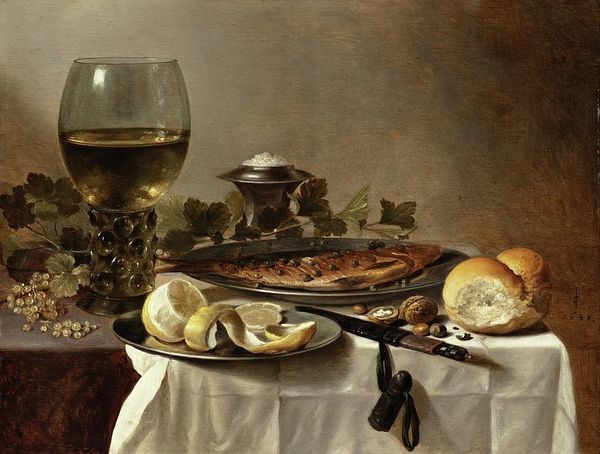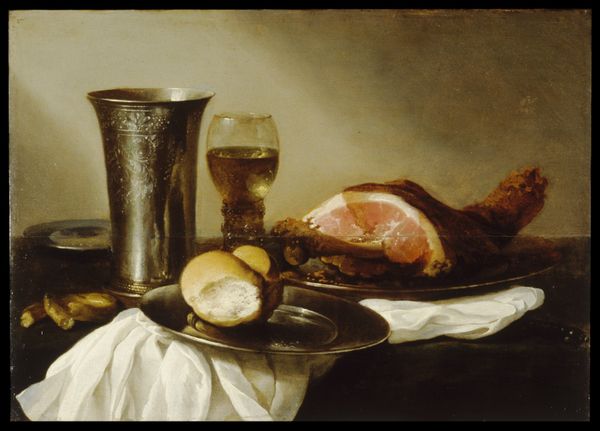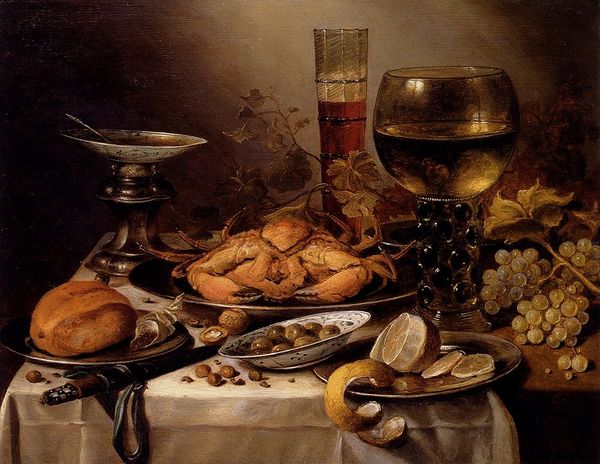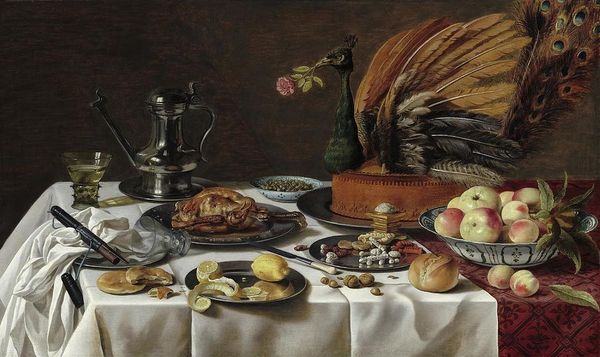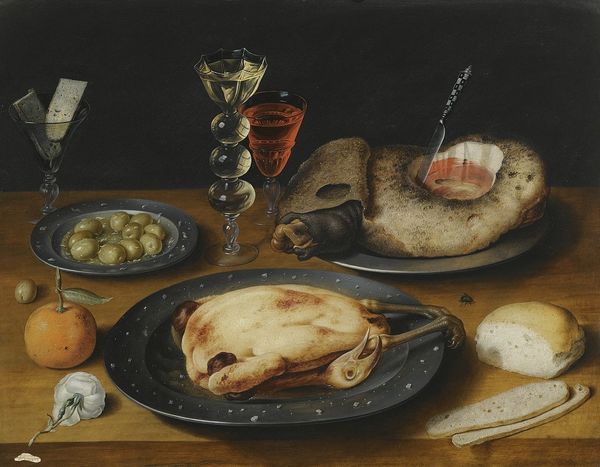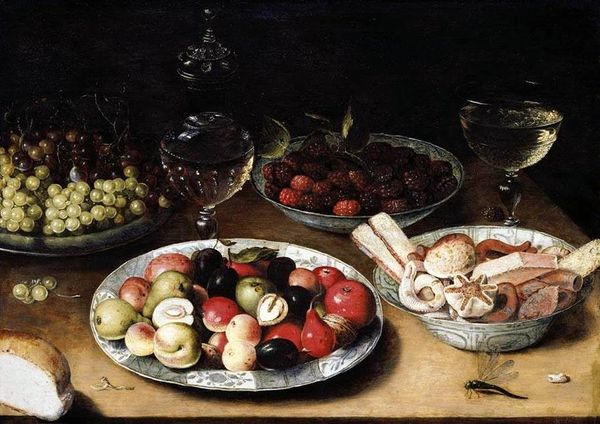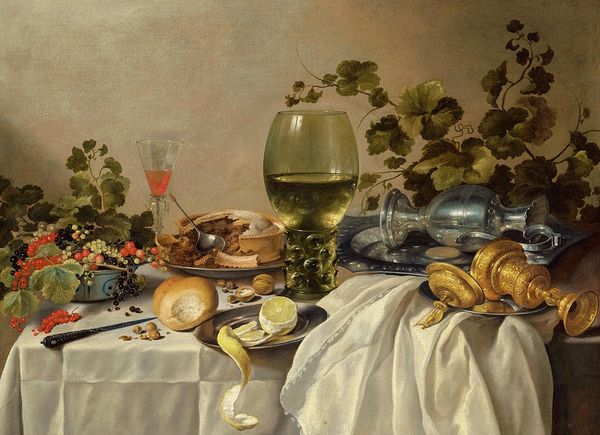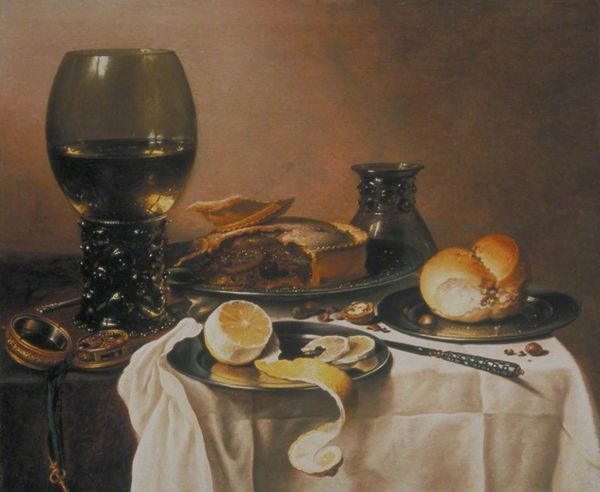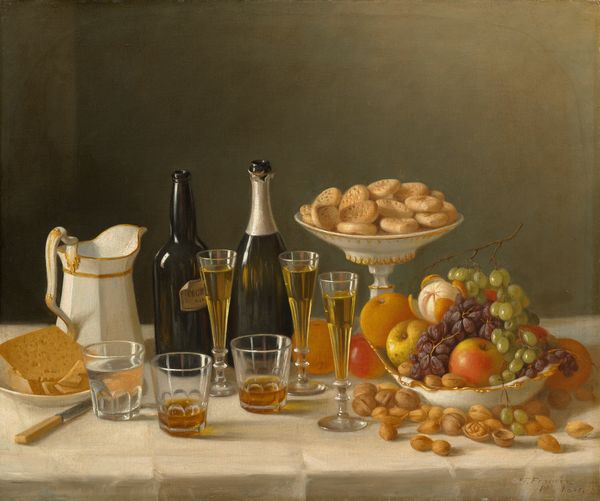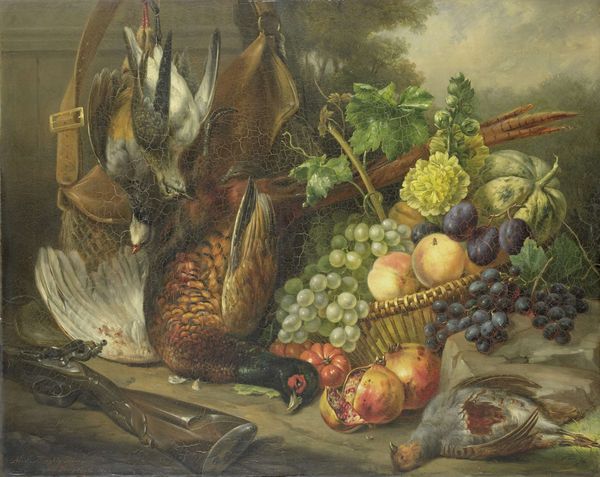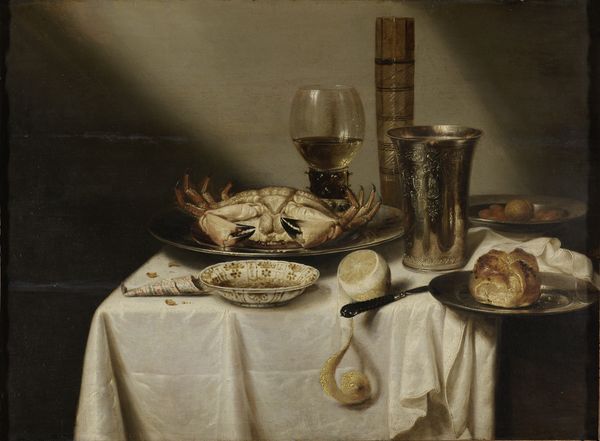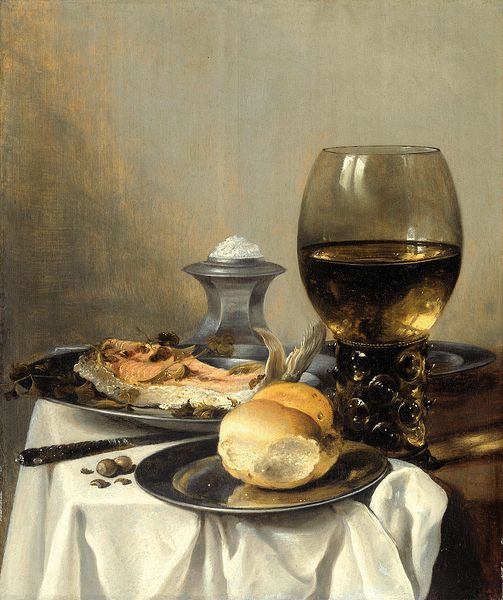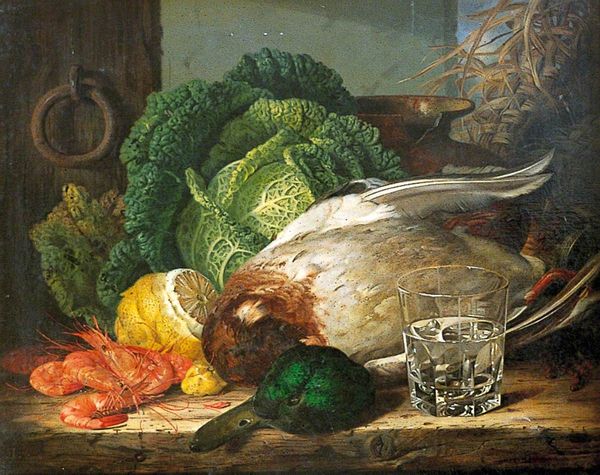
oil-paint, glass
still-life
baroque
dutch-golden-age
oil-paint
glass
oil painting
genre-painting
realism
Copyright: Public domain
Editor: So, here we have Pieter Claesz’s “Still Life,” from 1647. The items, rendered meticulously in oil paint, project an immediate sense of earthly indulgence and comfort... But what layers am I missing? What do you see in this painting? Curator: It’s remarkable, isn’t it? More than just food and drink, these carefully chosen objects are potent symbols, signifiers within a visual language. Take the overturned glass. What might that signify to you? Editor: Well, literal spillage, maybe carelessness? Curator: Perhaps, but consider also the brevity of earthly pleasures. What looks luscious – that ham hock, the overflowing glass – is simultaneously transient. It speaks to *vanitas,* doesn't it? To mortality. Look also at the partially peeled walnut: what does it evoke? Editor: Something revealed...truth? Honesty? Curator: Precisely. It is, in a way, an invitation. Claesz invites us to look beyond surface appearances, past momentary indulgence, towards a deeper understanding of life's fleeting nature. But look closer: notice that the knife implies the potential for more indulgence. What story do you suppose that detail can tell? Editor: I see your point; the image doesn't present simple ideas, there is nuance there! The contrast really makes the symbols all the more poignant and contradictory. Curator: Absolutely! It is precisely within these tensions that we locate cultural memory, these symbols resonating with an understanding of desire and consequence that has shaped our perceptions for centuries. What an intriguing paradox! Editor: Thanks. I see a depth here I completely missed initially. I will think more about the hidden symbols that tell stories!
Comments
No comments
Be the first to comment and join the conversation on the ultimate creative platform.

